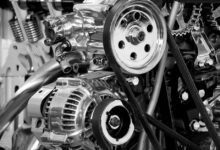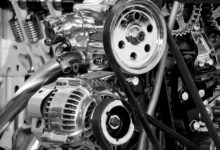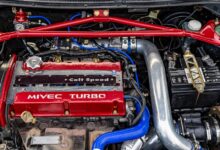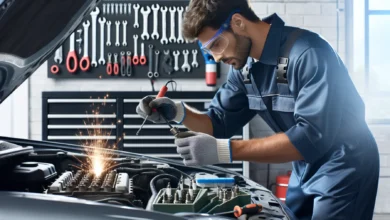Preventative Car Maintenance: The Ultimate Guide
Sponsored Ads
Introductory Words:
In the fast-paced world we live in, our cars have become an indispensable part of our daily lives. They provide us with the freedom to explore, commute, and connect with loved ones. However, maintaining a vehicle in pristine condition requires more than just occasional repairs. Preventative car maintenance is the key to extending the life of your vehicle, ensuring its reliability, and avoiding costly breakdowns. This comprehensive guide will delve into the world of preventative car maintenance, empowering you with the knowledge and tools you need to keep your car running smoothly for years to come.
Introduction:
Preventative car maintenance refers to the regular servicing and inspection of a vehicle to identify potential issues and rectify them before they escalate into major problems. By proactively addressing minor concerns, car owners can significantly reduce the likelihood of unexpected breakdowns, improve overall vehicle performance, and extend its lifespan. This proactive approach to car care offers numerous benefits, including increased safety, reduced repair costs, improved fuel efficiency, and enhanced resale value.
In contrast to reactive car maintenance, which involves fixing problems after they occur, preventative maintenance emphasizes preventing issues from arising in the first place. While reactive maintenance can be costly and time-consuming, preventative maintenance is typically more affordable and convenient, allowing car owners to stay ahead of potential problems and enjoy peace of mind.
To effectively implement preventative car maintenance, it is crucial to adhere to a regular maintenance schedule recommended by the vehicle’s manufacturer. This schedule typically outlines specific intervals for various maintenance tasks, such as oil changes, tire rotations, brake inspections, and fluid checks. Following these recommendations ensures that your car receives the necessary attention at the appropriate time, preventing minor issues from developing into significant problems.
Strengths and Weaknesses of Preventative Car Maintenance:
Benefits:
1. **Increased Safety:** Regular maintenance ensures that critical components, such as brakes, tires, and lights, are functioning optimally, enhancing vehicle safety and reducing the risk of accidents.
2. **Reduced Repair Costs:** By addressing minor issues promptly, preventative maintenance prevents them from escalating into costly repairs. This proactive approach saves car owners significant money in the long run.
3. **Improved Fuel Efficiency:** Regular maintenance ensures that the engine and other components are operating efficiently, resulting in improved fuel consumption and reduced emissions.
4. **Enhanced Resale Value:** A well-maintained car is more desirable to potential buyers, commanding a higher resale value compared to neglected vehicles.
Drawbacks:
1. **Time and Effort:** Preventative maintenance requires regular inspections and servicing, which can be time-consuming and effort-intensive, especially for busy individuals.
2. **Cost:** While preventative maintenance can save money in the long run, it does involve upfront costs for regular servicing and repairs.
3. **Over-Maintenance:** In some cases, excessive preventative maintenance can be unnecessary and wasteful. It is important to strike a balance between proactive maintenance and over-servicing.
Comprehensive Preventative Car Maintenance Guide:
| Maintenance Task | Frequency | Benefits |
|---|---|---|
| Oil Change | Every 3,000-5,000 miles | Protects engine components, reduces friction, and improves performance. |
| Tire Rotation and Alignment | Every 5,000-7,500 miles | Ensures even tire wear, improves handling, and extends tire life. |
| Brake Inspection | Every 12,000-15,000 miles | Checks brake pads, rotors, and fluid levels to maintain optimal stopping power. |
| Fluid Checks | Every 30,000-60,000 miles | Inspects and replenishes fluids such as coolant, brake fluid, and windshield washer fluid. |
| Air Filter Replacement | Every 12,000-15,000 miles | Ensures clean air flow to the engine, improving performance and fuel efficiency. |
| Battery Inspection and Cleaning | Every 24,000-30,000 miles | Checks battery terminals and connections, prevents corrosion, and extends battery life. |
| Spark Plug Replacement | Every 30,000-60,000 miles | Ensures optimal combustion, improves engine performance, and reduces emissions. |
| Fuel Filter Replacement | Every 30,000-45,000 miles | Protects the engine from contaminants in the fuel, ensuring smooth operation. |
| Transmission Fluid Change | Every 30,000-60,000 miles | Lubricates transmission components, prevents overheating, and prolongs transmission life. |
| Serpentine Belt Replacement | Every 60,000-90,000 miles | Drives accessories such as the water pump, alternator, and air conditioning compressor. |
| Timing Belt Replacement | Every 60,000-105,000 miles | Synchronizes the timing of the engine valves and pistons, preventing catastrophic engine failure. |
FAQs on Preventative Car Maintenance:
-
What is the most important preventative maintenance task?
Regular oil changes are crucial for protecting the engine and extending its life.
-
How often should I rotate my tires?
Tire rotation should be performed every 5,000-7,500 miles to ensure even wear and extend tire life.
-
Why is it important to check fluid levels regularly?
Fluids such as coolant and brake fluid play vital roles in maintaining engine and brake performance.
-
When should I replace my timing belt?
Timing belt replacement intervals vary by vehicle, but typically range from 60,000 to 105,000 miles.
-
Can I perform preventative maintenance on my own?
Some basic maintenance tasks, such as oil changes and tire inspections, can be performed at home with the right tools and knowledge.
-
How much does preventative maintenance cost?
Preventative maintenance costs vary depending on the vehicle and the specific tasks performed.
-
Is it necessary to follow the manufacturer’s maintenance schedule?
Adhering to the manufacturer’s maintenance schedule is highly recommended to ensure optimal vehicle performance and longevity.
-
Can I over-maintain my car?
Excessive preventative maintenance can be a waste of time and resources.
-
What are the signs of neglected car maintenance?
Neglected maintenance can lead to decreased performance, increased repair costs, and reduced safety.
-
Can preventative maintenance prevent all car problems?
While preventative maintenance significantly reduces the risk of problems, it cannot eliminate all potential issues.










